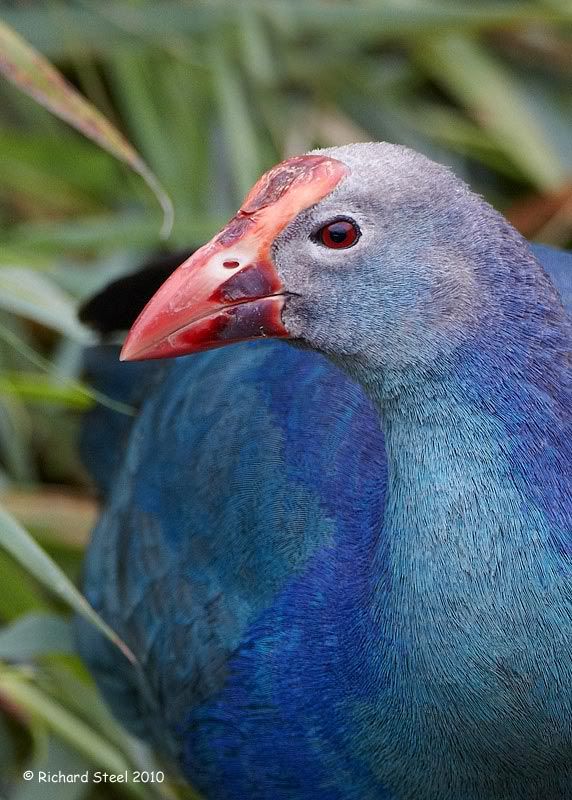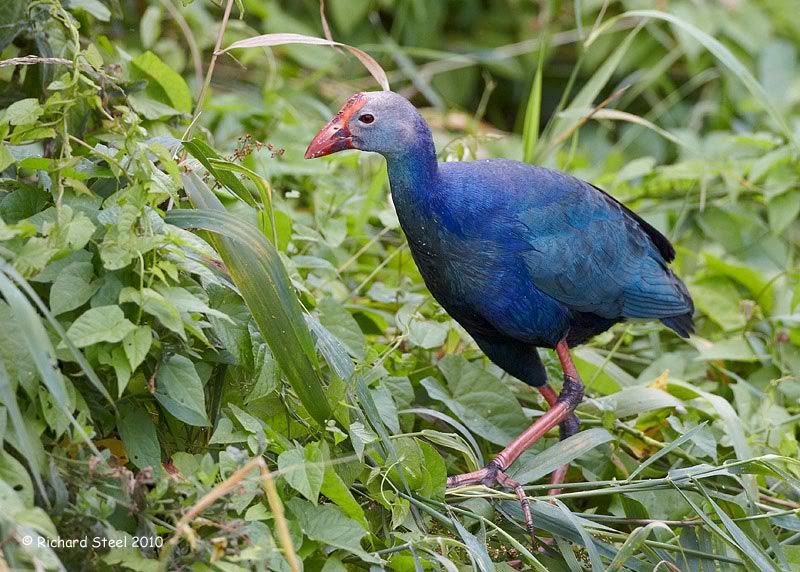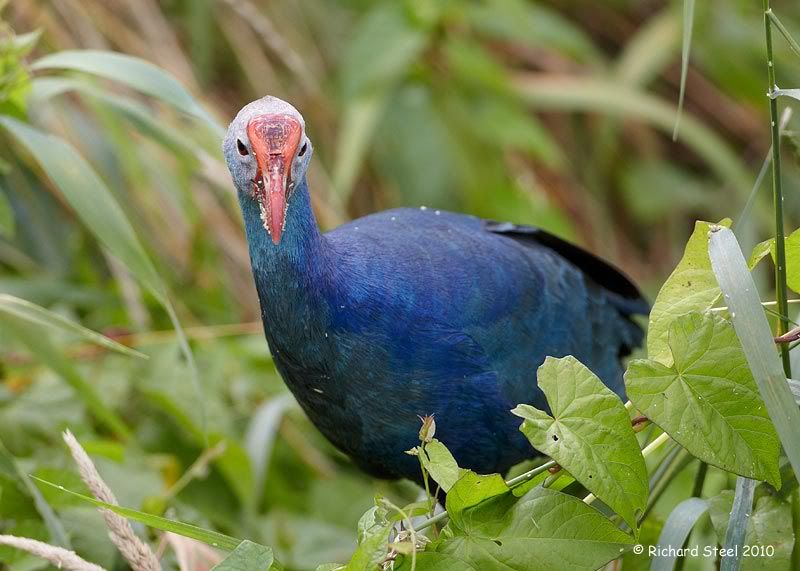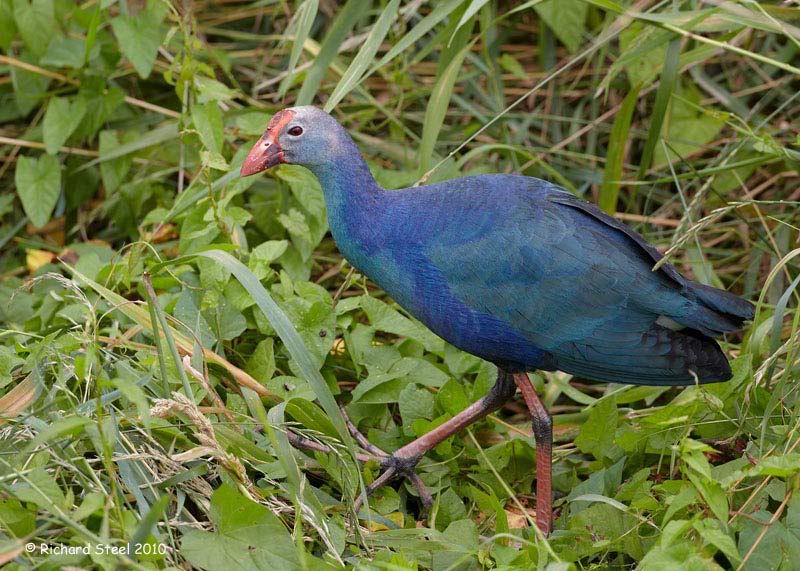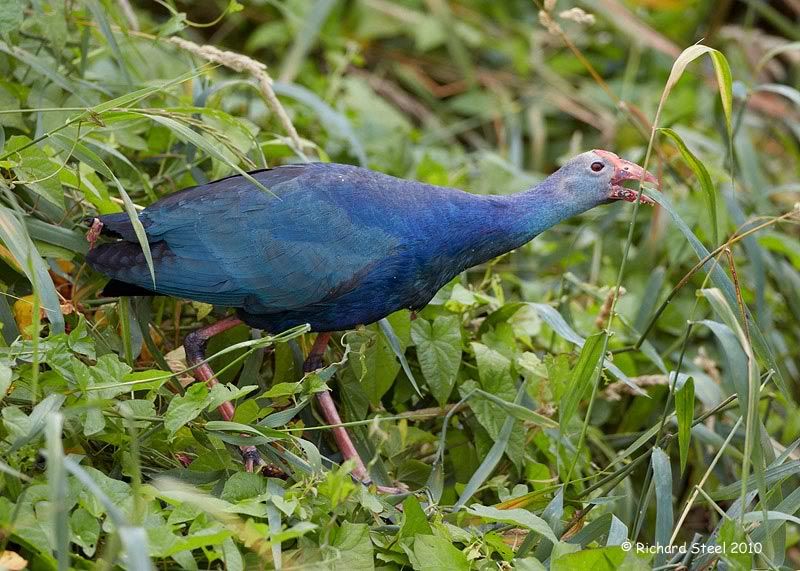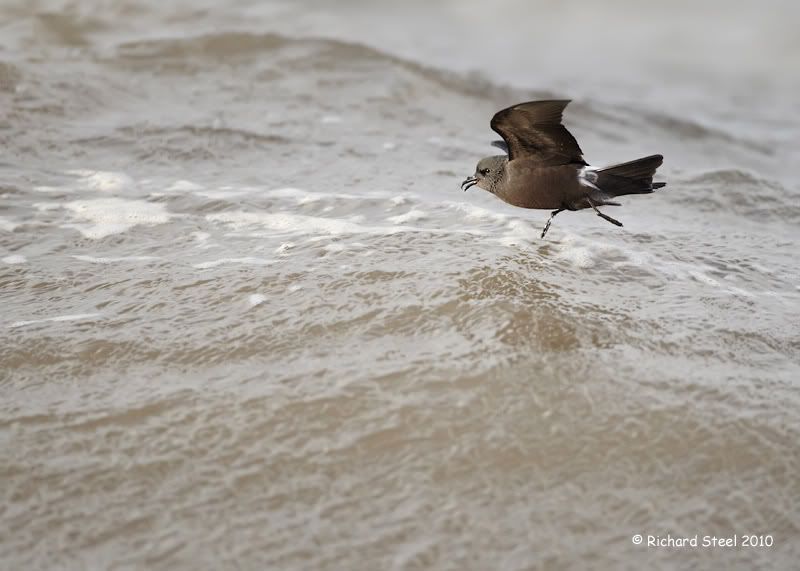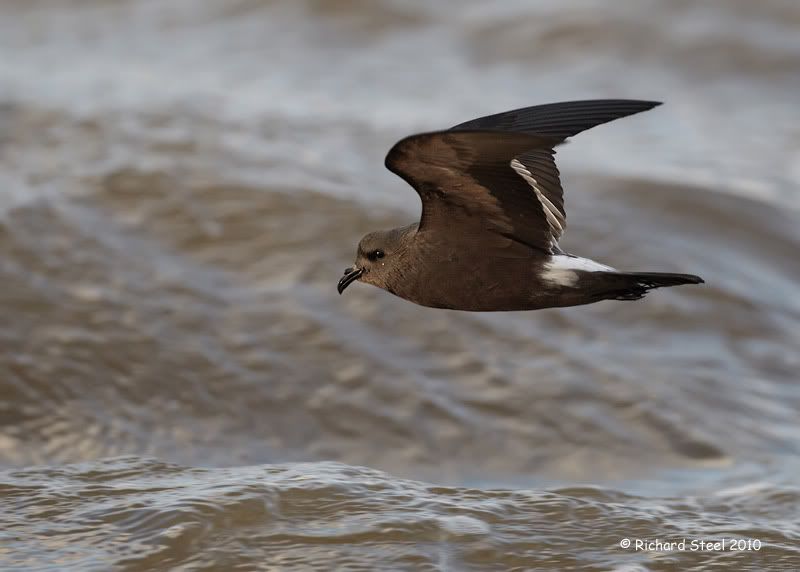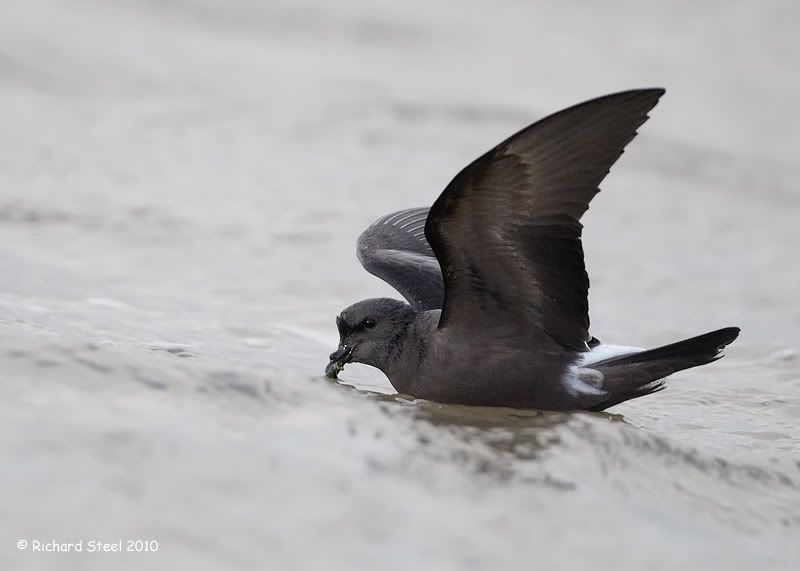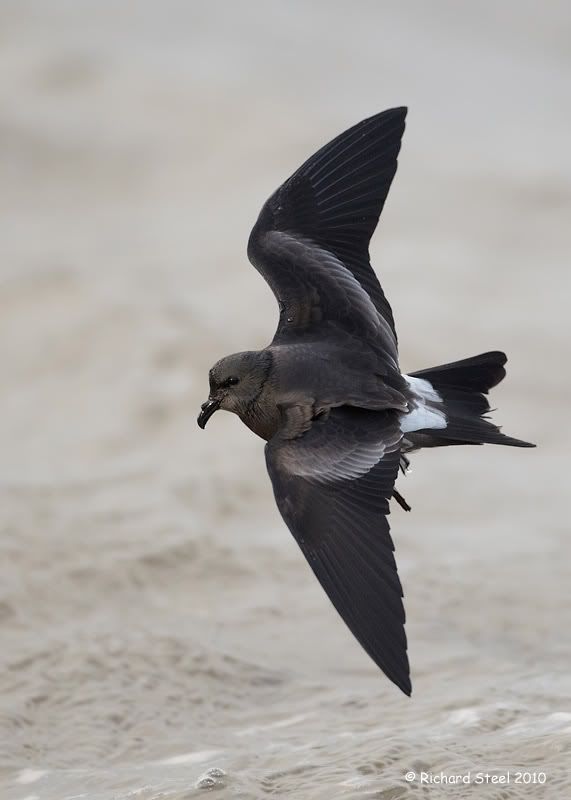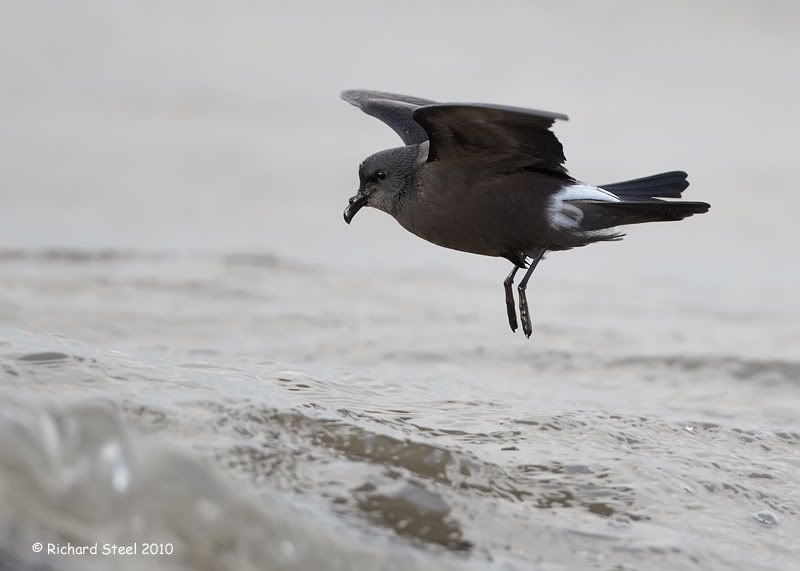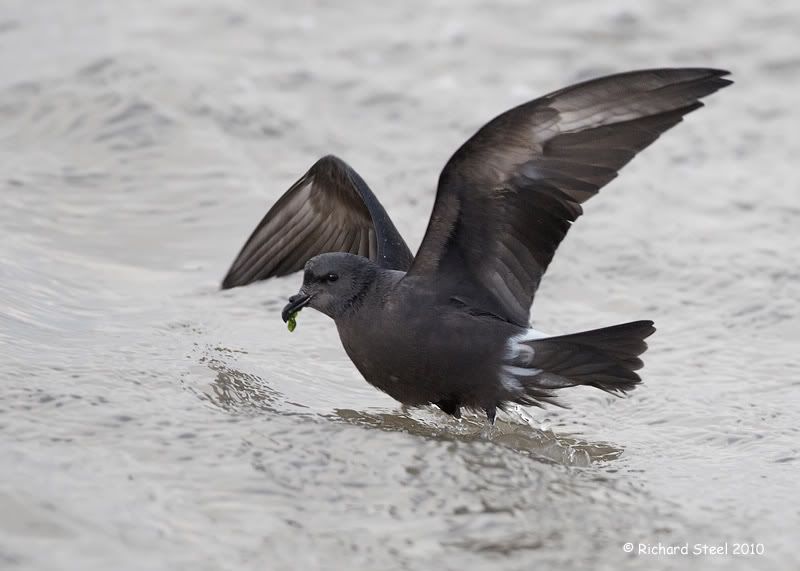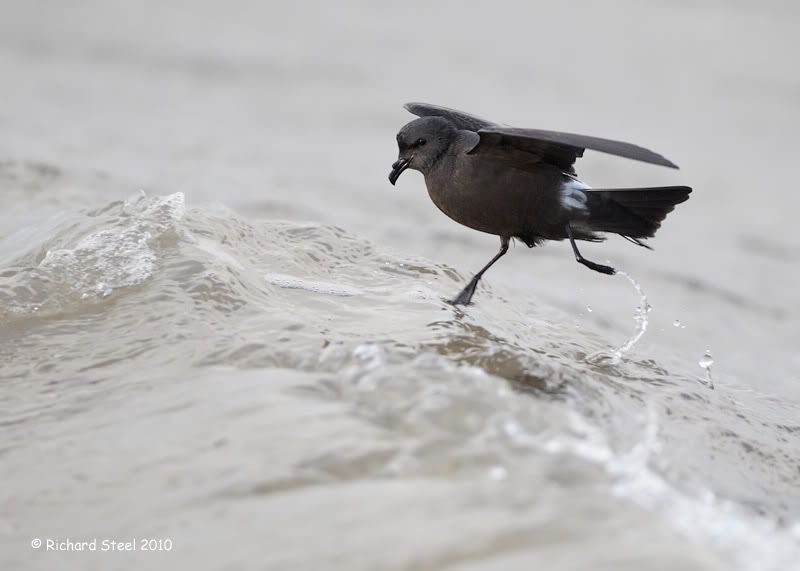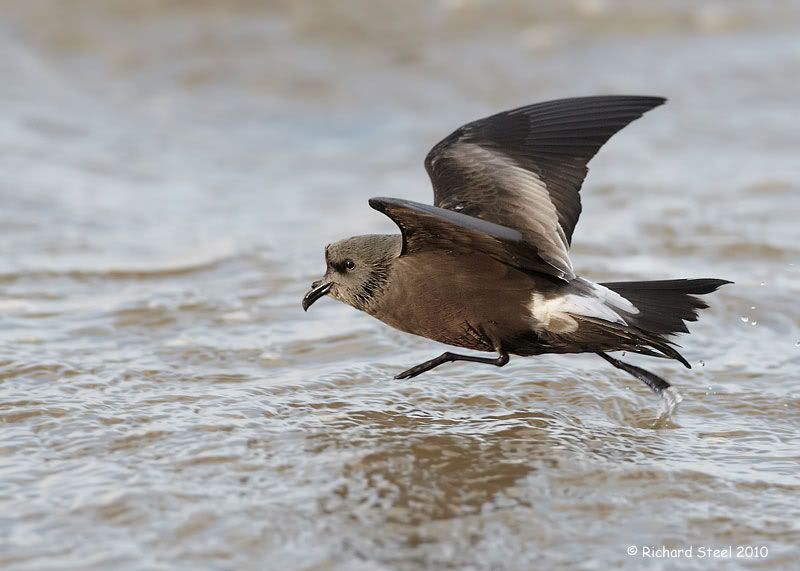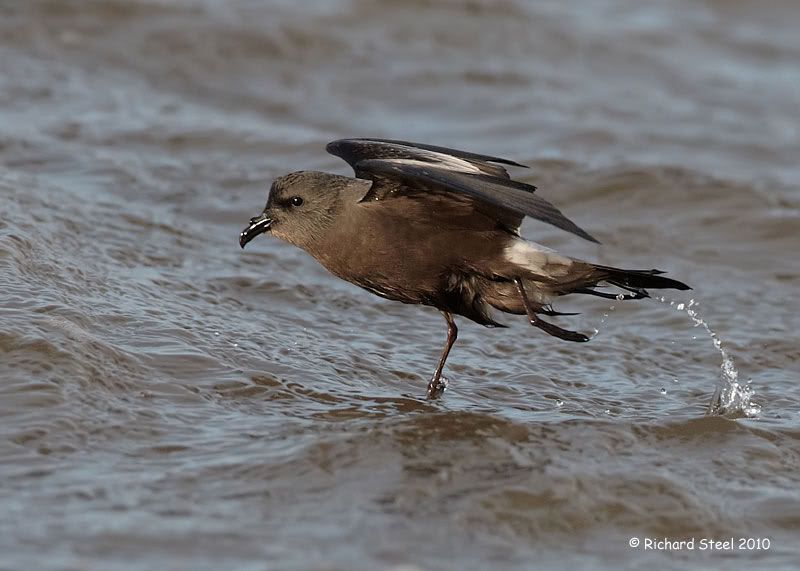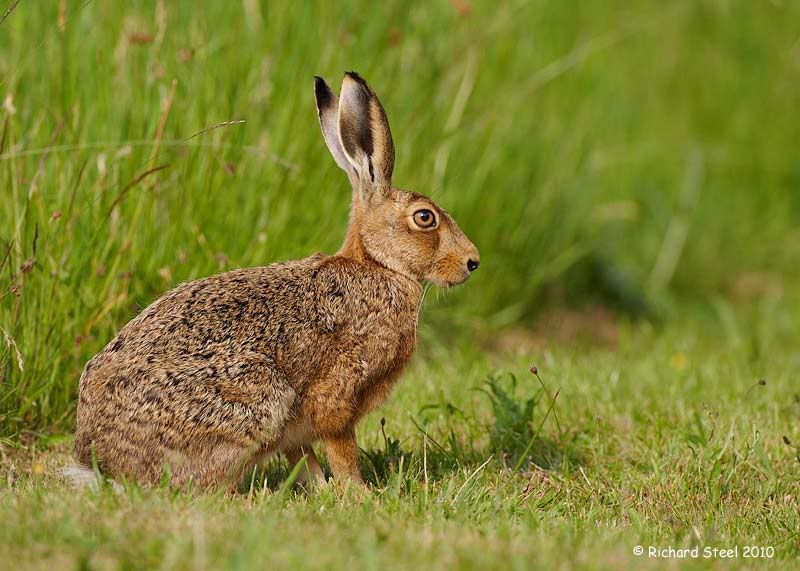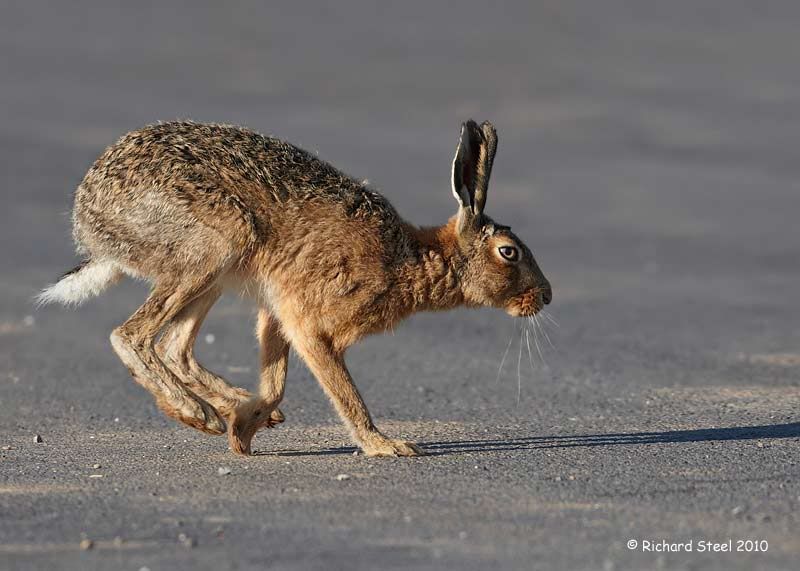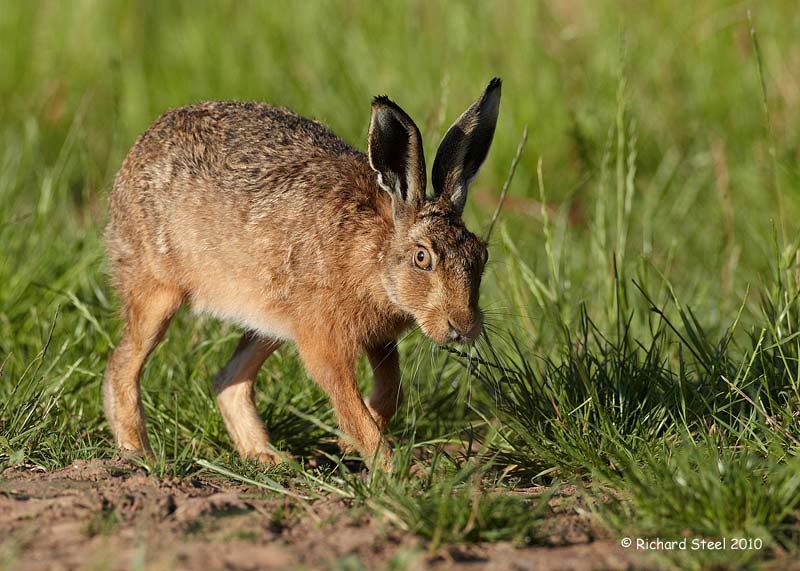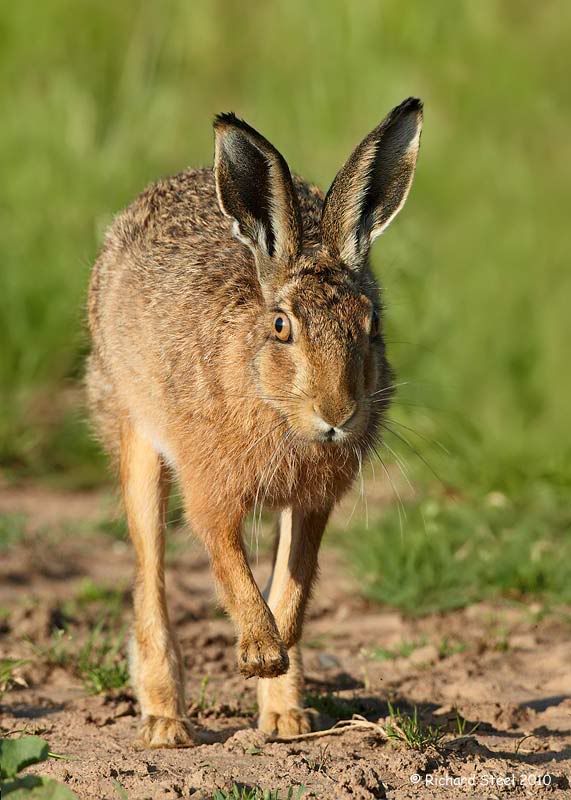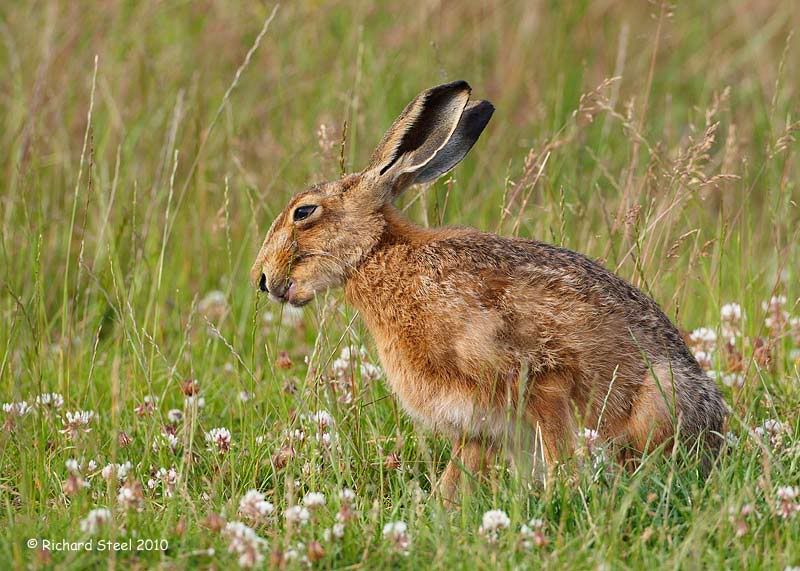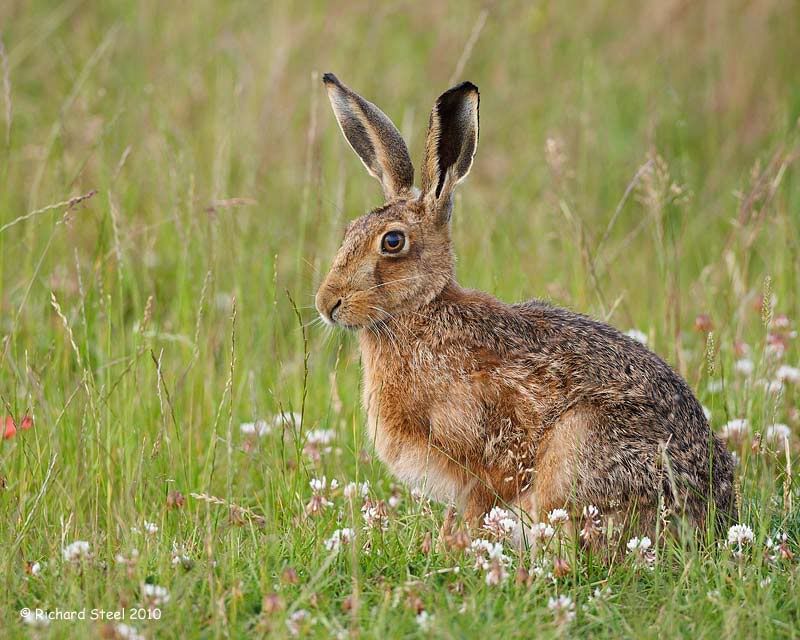The Curious Incident of the Purple Swamphen
Back at the beginning of August a Purple Gallinule or Swamphen was being reported as being sighted in ditch near Chester. I must admit I do not usually go to rare bird sightings as I prefer to avoid the crowds. However, given the close proximity I thought I would go and take a look and hoped to avoid the birdwatchers by arriving at first light on a Sunday morning. The bird was quickly located and it had taken up temporary residence in a small steeply sided heavily overgrown ditch.
A dogwalker passed me and told me that the bird had been there for around 3 weeks and the unusual technicolour 'moorhen' had become well know to the locals. The birdwatchers soon started arriving and there was great debate over the origins of the birds which was un-ringed and free flying. Checks had been made with zoos and bird collections and none had reported any loses.
The bird was the grey headed race from Asia which is known to be highly migratory but it seemed unlikely that such a bird would undertake such an epic voyage. To me the origin (escapee or a lost wild bird) was irrelevant as the bird was free flying and in the wild. Such a beautifully coloured bird certainly brightened up a fairly dull Sunday morning.
It was a difficult bird to photograph given the situation and abundance of vegetation. The bird seemed to be very settled and was happily stripping off grass seed heads.
I stay for around 3 hours and decided by that time I had got enough photographs and the numbers of bird spotting scopes was rapidly increasing in to a mini forest of metal and glass.
Apparently after I left two looking locals arrived claiming the bird belonged to them and it had escaped from the back garden where they were kept as pets. This seems somewhat unlikely but you never know what is kept in back gardens of the UK! The report has it that they then went to considerable effort charging up and down the ditch with nets but were unsuccessful in capturing the bird. Subsequently I have heard that the bird flew off and is now residing on a fishing lake about 15 miles away where it is happily living with its diet supplemented by free handouts of sweetcorn from the anglers.
Saturday, September 25, 2010
Saturday, September 18, 2010
Storm Walkers
I always think I am very fortunate where I live to have such a wealth of bird photography potential on my doorstep. The anticipation increases in late September and the start of October when during prolonged periods of north-west gales, the Wirral peninsula is one of the best places in the UK to see Leach's Storm Petrels. This small enigmatic pelagic species is swept in to Liverpool Bay and a number usually end up lingering in the mouth of the River Mersey, before making their way eastward along the top of the peninsula on the ebbing tide. All the conditions have to be right, good sized tides and a very strong north westerly wind for several days. On some years the number of birds sighted can be counted on one hand however, during this last week they were driven in by the 100s by the pummelling winds.
Photographing the petrels is very difficult. I will try and paint the scene for those who have not experienced it. Basically you are stood facing the full force of the elements that includes a face full of gale force sand-laden winds and salt spray from the raging sea.
What are you are looking for is a small dark coloured bird about the size of a small thrush battling in a bat like fluttering flight through the crashing waves.
A significant problem faced is the difficulty focusing on the rapidly erratic flying object in the severe conditions.
It never ceases to amaze me how such a tiny bird can battle against such harsh conditions.
I was fortunate to have one bird temporarily pause in front of me to feed on some seaweed.
The birds as they struggle across the rocking sea show the delightful behaviour of walking across the water.
My brief after work sessions were a memorable experience that will stay with me for a long time. Hopefully we will get some further gales very soon which will let try and meet the challenge of photographing these wonderful birds once more.
As an aside and for those who may be interested in seeing the face behind the camera, I am due to appear on BBC Countryfile tomorrow (Sunday 19th) on BBC 1 at 6:30pm as I was involved in the long-listing of entries to their photographic competition this year.
I always think I am very fortunate where I live to have such a wealth of bird photography potential on my doorstep. The anticipation increases in late September and the start of October when during prolonged periods of north-west gales, the Wirral peninsula is one of the best places in the UK to see Leach's Storm Petrels. This small enigmatic pelagic species is swept in to Liverpool Bay and a number usually end up lingering in the mouth of the River Mersey, before making their way eastward along the top of the peninsula on the ebbing tide. All the conditions have to be right, good sized tides and a very strong north westerly wind for several days. On some years the number of birds sighted can be counted on one hand however, during this last week they were driven in by the 100s by the pummelling winds.
Photographing the petrels is very difficult. I will try and paint the scene for those who have not experienced it. Basically you are stood facing the full force of the elements that includes a face full of gale force sand-laden winds and salt spray from the raging sea.
What are you are looking for is a small dark coloured bird about the size of a small thrush battling in a bat like fluttering flight through the crashing waves.
A significant problem faced is the difficulty focusing on the rapidly erratic flying object in the severe conditions.
It never ceases to amaze me how such a tiny bird can battle against such harsh conditions.
I was fortunate to have one bird temporarily pause in front of me to feed on some seaweed.
The birds as they struggle across the rocking sea show the delightful behaviour of walking across the water.
My brief after work sessions were a memorable experience that will stay with me for a long time. Hopefully we will get some further gales very soon which will let try and meet the challenge of photographing these wonderful birds once more.
As an aside and for those who may be interested in seeing the face behind the camera, I am due to appear on BBC Countryfile tomorrow (Sunday 19th) on BBC 1 at 6:30pm as I was involved in the long-listing of entries to their photographic competition this year.
Tuesday, September 07, 2010
Summer Hares
Many people would associate the hare with a symbol of Spring but I have found it can be very productive photographing them in the summer. At least it is at the site I usually visit. However, this is not the case for many areas well hares dwell as they are lost from view within agricultural crops. I usually undertake my summer hare photography during August when many birds are going through a moult and not really looking at their best and there is a good chance of encountering a leveret or two. However, this set were taken during a couple of visits in June.
Most of my hare photography is done as a short pre-work session and so an early alarm clock and an hour or so with the camera before heading off to the office. Always a good way to start the day.
As hares tend to be most active at the beginning and end of the day, these short session can be very productive.
On some occasions they can get a bit too close.
At other times you can just get them in frame. A hare running towards you takes constant refocusing as it can play havoc with camera autofocus.
Some days I may make a visit to the hares on the way home from work if it is a sunny evening. On these occasions the hares are generally much more relaxed and preoccupied with feeding and grooming.
What better way to unwind from everyday work pressures than in the company of these wonderful animals.
Many people would associate the hare with a symbol of Spring but I have found it can be very productive photographing them in the summer. At least it is at the site I usually visit. However, this is not the case for many areas well hares dwell as they are lost from view within agricultural crops. I usually undertake my summer hare photography during August when many birds are going through a moult and not really looking at their best and there is a good chance of encountering a leveret or two. However, this set were taken during a couple of visits in June.
Most of my hare photography is done as a short pre-work session and so an early alarm clock and an hour or so with the camera before heading off to the office. Always a good way to start the day.
As hares tend to be most active at the beginning and end of the day, these short session can be very productive.
On some occasions they can get a bit too close.
At other times you can just get them in frame. A hare running towards you takes constant refocusing as it can play havoc with camera autofocus.
Some days I may make a visit to the hares on the way home from work if it is a sunny evening. On these occasions the hares are generally much more relaxed and preoccupied with feeding and grooming.
What better way to unwind from everyday work pressures than in the company of these wonderful animals.
Wednesday, September 01, 2010
Prickly Visitor
A few weeks back I was taking some rubbish out to the bin, when I heard a strange rustling in my tiny back garden. My first thought was that it might be one of the neighbours cats trying to catch a mouse in the dark. However, it was an unusual sound and curiosity got the better of me (impossible to shake off that zoology training). I decided to investigate with a torch but failed to locate the culprit. All was revealed a couple of weeks later when popping out in to the back garden one Saturday afternoon I was taken aback to find a hedgehog happily snuffling around.
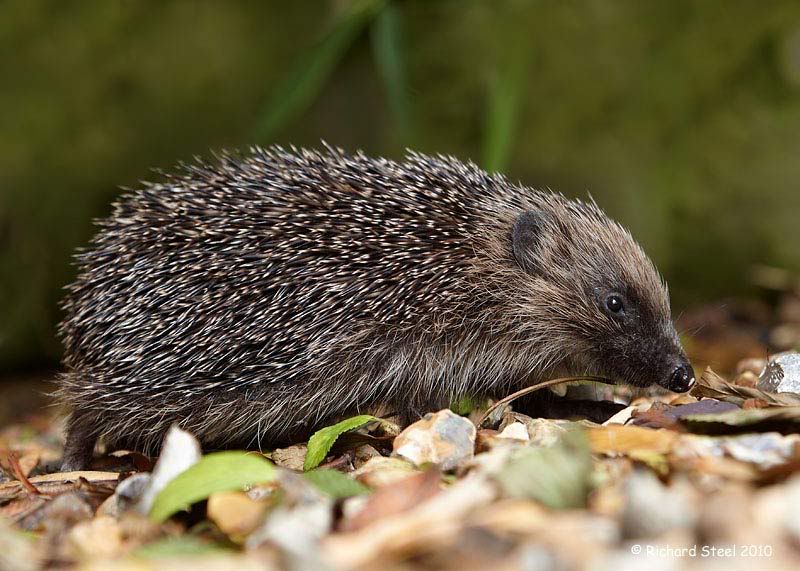
I always knew there had been a good reason for neglecting the gardening for such a long time :). Actually this has just resulted from lack of time and a very busy work schedule but the build up of leaf litter had obviously proved attractive to the prickly visitor.

Having never had opportunity to photograph a hedgehog before I was quickly back in to the house to grab the camera and the rarely used 70-200mm lens. It was good fun lying down in close proximity, but out of flea jumping distance, to the hedgehog as it foraged through the gravel.
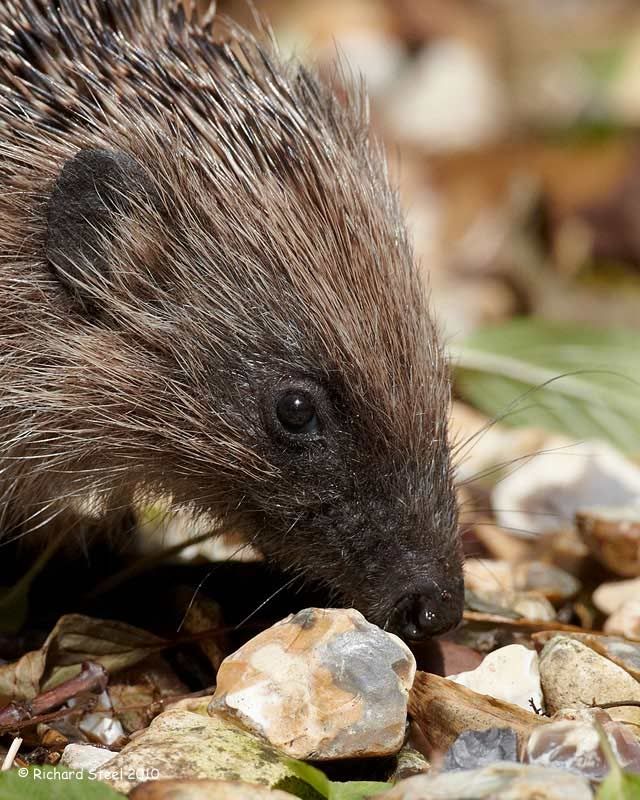
I was amazed to find the hedgehog in my tiny garden which is surrounded by a high brick wall. However, I subsequently learnt that despite their unlikely appearance that hedgehogs are very good climbers.
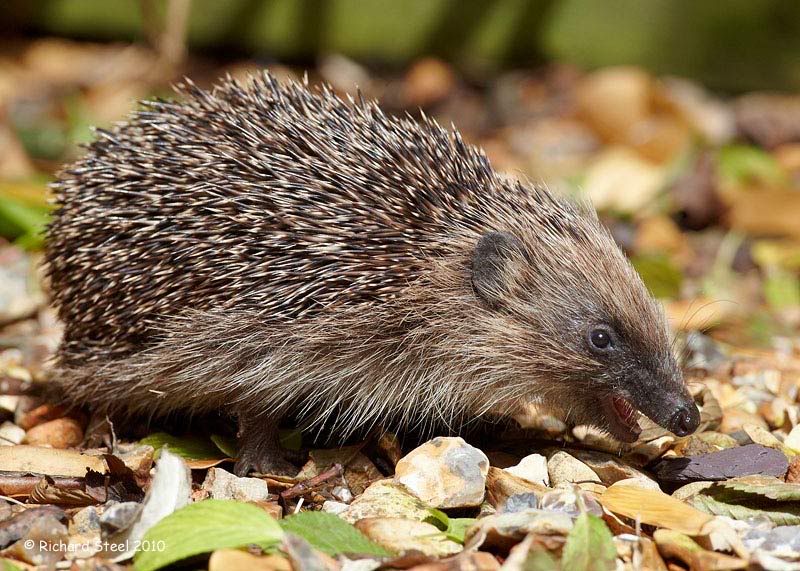
After about 15 minutes of snuffling around the hedgehog wandered off to the back corner of the garden to disappear in to an 'igloo' of bamboo leaves it had constructed.
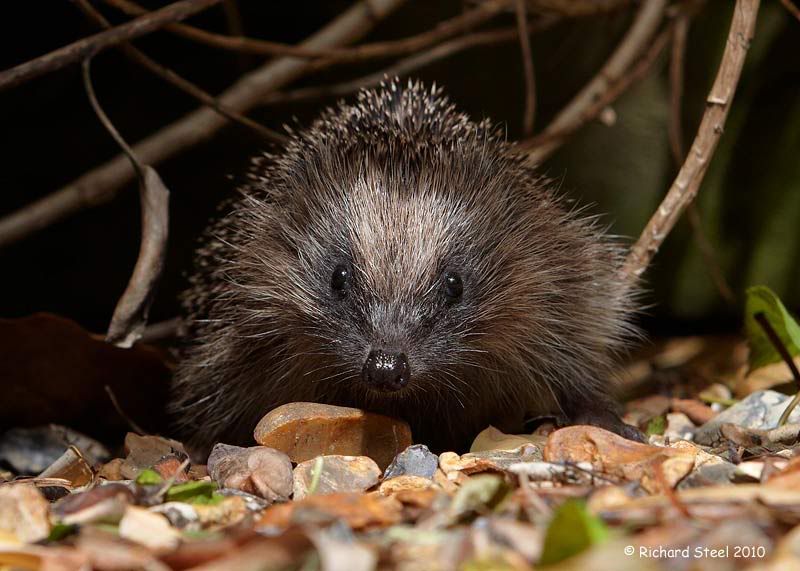
I have this habit on when I encounter a new species with the camera I like to turn to the books and find out more about them. 'Horace' as he was now known looked to be a young hedgehog so I decided to give him a bit of helping hand to reach his minimum hibernation weight. Apparently cat biscuits and a bowl of water would provide a good dietary supplement and so over the next couple of weeks I occasionally put out a few cat biscuits and bowl of fresh water. Both hedgehog and the neighbours cat seemed very happy with the free meal handouts.
'Horace' put in a few daylight appearances but only during one such outing did I decide to take a few more photos.

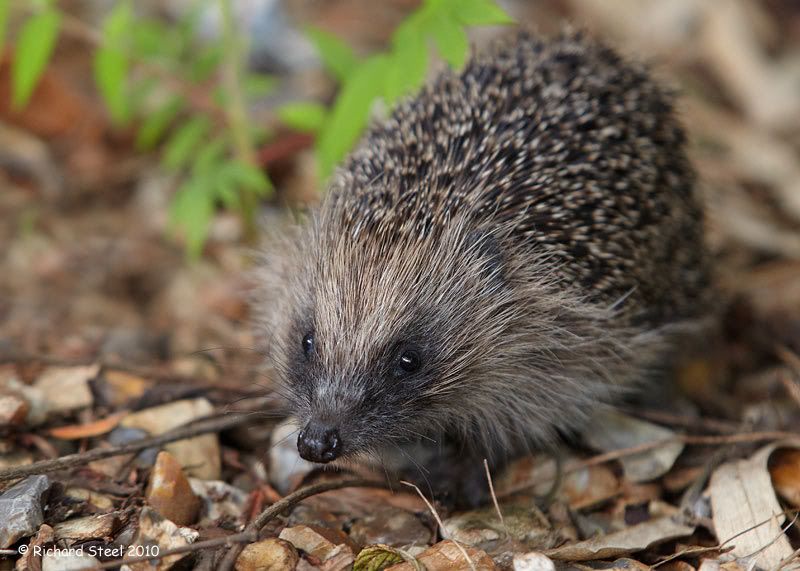
It appears the hedgehog has now moved on to another garden but it was a real pleasure to act as a temporary host. There are couple of interesting points from this experience which are that a bit of neglect in the garden can do wonders for attracting wildlife and I would urge all to dedicate a corner for this purpose. Secondly and more importantly with autumn rapidly approaching, piles of leaves and stick for bonfires will be very attractive to a hedgehog so please check before striking the match.
A few weeks back I was taking some rubbish out to the bin, when I heard a strange rustling in my tiny back garden. My first thought was that it might be one of the neighbours cats trying to catch a mouse in the dark. However, it was an unusual sound and curiosity got the better of me (impossible to shake off that zoology training). I decided to investigate with a torch but failed to locate the culprit. All was revealed a couple of weeks later when popping out in to the back garden one Saturday afternoon I was taken aback to find a hedgehog happily snuffling around.

I always knew there had been a good reason for neglecting the gardening for such a long time :). Actually this has just resulted from lack of time and a very busy work schedule but the build up of leaf litter had obviously proved attractive to the prickly visitor.

Having never had opportunity to photograph a hedgehog before I was quickly back in to the house to grab the camera and the rarely used 70-200mm lens. It was good fun lying down in close proximity, but out of flea jumping distance, to the hedgehog as it foraged through the gravel.

I was amazed to find the hedgehog in my tiny garden which is surrounded by a high brick wall. However, I subsequently learnt that despite their unlikely appearance that hedgehogs are very good climbers.

After about 15 minutes of snuffling around the hedgehog wandered off to the back corner of the garden to disappear in to an 'igloo' of bamboo leaves it had constructed.

I have this habit on when I encounter a new species with the camera I like to turn to the books and find out more about them. 'Horace' as he was now known looked to be a young hedgehog so I decided to give him a bit of helping hand to reach his minimum hibernation weight. Apparently cat biscuits and a bowl of water would provide a good dietary supplement and so over the next couple of weeks I occasionally put out a few cat biscuits and bowl of fresh water. Both hedgehog and the neighbours cat seemed very happy with the free meal handouts.
'Horace' put in a few daylight appearances but only during one such outing did I decide to take a few more photos.


It appears the hedgehog has now moved on to another garden but it was a real pleasure to act as a temporary host. There are couple of interesting points from this experience which are that a bit of neglect in the garden can do wonders for attracting wildlife and I would urge all to dedicate a corner for this purpose. Secondly and more importantly with autumn rapidly approaching, piles of leaves and stick for bonfires will be very attractive to a hedgehog so please check before striking the match.
Subscribe to:
Posts (Atom)

